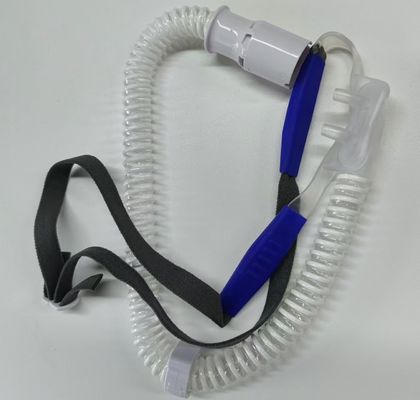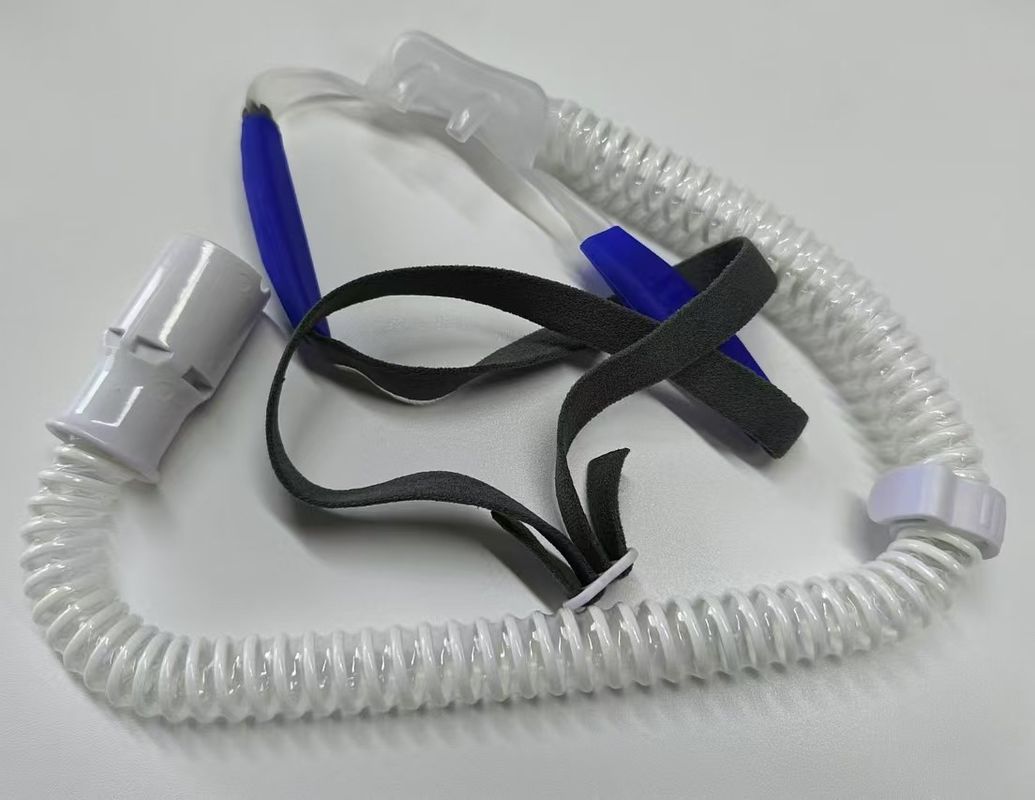
Medical High Flow Nasal Cannula Flow Nasal Cannula Adult Without Humidifier
-
Highlight
Nasal Cannula Adult
,Adult High Flow Nasal Cannula
,Medical High Flow Nasal Cannula
-
Place Of OriginChina
-
Disinfecting TypeEOS
-
SizeM
-
StockNo
-
Shelf Life3 Years
-
MaterialPVC
-
Quality CertificationCE
-
Instrument ClassificationClass II
-
PropertiesMedical Materials & Accessories
-
Product NameMedical Adult High Flow Nasal Cannula
-
CertificateCE/ISO
-
PackingIndividual Pack
-
Place of OriginChina
-
Brand NameHenan
-
CertificationCE
-
Model NumberCan be Customized
-
Minimum Order Quantity5000pcs
-
PriceNegotiable
-
Packaging DetailsIndividual Packaging
-
Delivery Time24-30 days
-
Payment TermsL/C, T/T, Western Union
-
Supply Ability50000000pcs per month
Medical High Flow Nasal Cannula Flow Nasal Cannula Adult Without Humidifier
Medical High Flow Nasal Cannula flow Nasal Cannula Adult Without humidifier
Product description
A high-flow nasal cannula (HFNC) is a medical device used to deliver a high flow of heated and humidified oxygen-enriched air to patients with respiratory issues. It consists of a nasal cannula connected to an air-oxygen blender, a heated humidifier, and a flow meter.
HFNC therapy offers several advantages over traditional oxygen therapy methods, such as:
- Comfort: The warm and humidified air reduces nasal discomfort and dryness, making it more comfortable for patients compared to standard oxygen delivery systems.
- High Flow Rates: HFNC can deliver oxygen at higher flow rates than conventional oxygen therapy, providing better oxygenation and CO2 washout.
- Improved Oxygenation: The high flow of oxygen-enriched air can improve oxygenation in patients with respiratory distress or hypoxemia.
- Reduced Work of Breathing: HFNC can decrease the work of breathing by providing constant positive airway pressure, making it easier for patients to breathe.
- Temperature and Humidity Control: The ability to control the temperature and humidity of the delivered air helps prevent airway drying and irritation.
- Reduced Risk of Complications: HFNC therapy may reduce the risk of complications such as nosocomial infections and ventilator-associated pneumonia.
- Easy Adaptation: Patients find it easier to tolerate HFNC therapy due to its non-invasive nature and comfortable delivery of oxygen.
HFNC is commonly used in various clinical settings, including intensive care units (ICUs), emergency departments, post-anesthesia care units, and for patients with acute respiratory failure or chronic respiratory conditions. It is essential to monitor patients closely while using HFNC to ensure appropriate oxygenation levels and to adjust settings as needed based on clinical response.
![]()
Application
- Acute Respiratory Distress Syndrome (ARDS): HFNC is often used in the management of ARDS to improve oxygenation and reduce the work of breathing in critically ill patients.
- Chronic Obstructive Pulmonary Disease (COPD): HFNC therapy can be beneficial for patients with COPD exacerbations by providing high-flow oxygen and reducing respiratory distress.
- Pneumonia: HFNC is utilized in patients with pneumonia to support oxygenation and ventilation, particularly in cases where conventional oxygen therapy may be insufficient.
- Postoperative Care: HFNC is employed in postoperative care to manage respiratory complications, aid in weaning off mechanical ventilation, and enhance postoperative oxygenation.
- Pediatric Care: HFNC is commonly used in pediatric settings to treat respiratory distress in infants and children, providing effective oxygen therapy with improved comfort and tolerance.
- Heart Failure: Patients with acute decompensated heart failure may benefit from HFNC therapy to improve oxygenation and alleviate respiratory distress.
- Neuromuscular Disorders: HFNC can be helpful for patients with neuromuscular disorders who have difficulty with breathing, providing respiratory support and oxygenation.
- Sleep Apnea: In some cases of sleep apnea, HFNC therapy can help maintain airway patency and improve oxygen levels during sleep.
- Emergency Departments: HFNC is used in emergency departments to provide rapid and effective oxygen therapy to patients presenting with respiratory distress or hypoxemia.
- Home Care: HFNC can be utilized in home care settings for patients requiring long-term oxygen therapy, offering a comfortable and efficient means of oxygen delivery outside of the hospital environment.
![]()
FAQ
1.What is a high-flow nasal cannula used for?
A high-flow nasal cannula accomplishes a reduction of nasopharyngeal airway resistance, leading to improved ventilation and oxygenation through the application of a positive pressure environment.
2.What is the difference between a high-flow nasal cannula and a regular cannula?
High-flow nasal cannulas deliver warm oxygen. It can deliver up to about 60 liters of oxygen per minute. It delivers warm oxygen because oxygen at this flow rate could dry up your nasal passages quickly and lead to nosebleeds. Low-flow nasal cannulas don't deliver warm oxygen.
3.What is the highest flow rate for nasal cannula?
The high-flow nasal cannula (HFNC) delivers oxygen at rates that exceed a person's flow demands (up to 60 L/min), and delivers positive pressure for lung recruitment and the establishment of alveolar ventilation.
4.What is the difference between high-flow and low flow?
Thus, if the ventilatory demand of the patient is met completely by the system, then it is a high-flow system. In contrast, if the system fails to meet the ventilatory demand of the patient, then it is classified as a low-flow system.
5.Which patient should not use the high-flow nasal cannula?
Contraindications. Critically ill infants and children requiring immediate higher level of respiratory support i.e. NIV or invasive ventilation or decreased level of consciousness.
6.What are the benefits of high-flow oxygen?
When compared to traditional oxygen therapy, delivered through a face mask, high flow continuous oxygen therapy offers: Better clearance of fluids (secretions) due to humidified air. Better tolerated and more comfortable. Easier to communicate during therapy.


